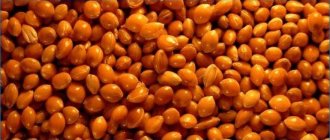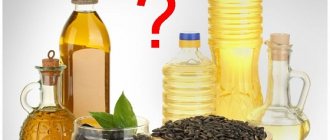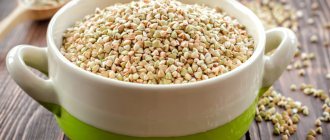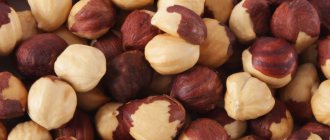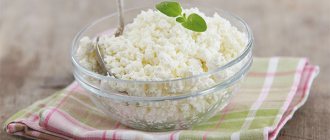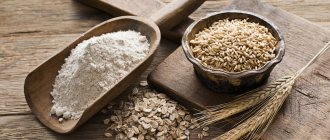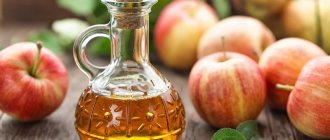Coconut oil has long been used in cooking: it can be added to sweet cereals, when preparing meat dishes, and vegetables can be stewed with it. Reviews from doctors are very contradictory, since the product can provide both benefit and harm. In order for the oil to be used only for good, you need to know how to use it correctly for food, then the positive effect of the product will be on your face.
Why is the choice not always made in favor of coconut?
The first is our traditionalism: food should be familiar. For us, there is food that we have been eating since childhood, and coconut edible oil is that new food that we are wary of.
Secondly, traditionalism is not so bad, since nations and peoples have lived on the same territory for centuries, and their bodies, in the process of evolution, produce enzymes for one or another food characteristic of a given region. Eating coconut oil is the prerogative of Indians and Asians; it is a food familiar to their stomach. We need to get used to it gradually, because our food is prepared mainly with sunflower vegetable oil.
And third is the price. Refined coconut oil is almost four times more expensive than sunflower oil, and unrefined cold-pressed oil is twenty times more expensive. Although natural and healthy, the food is too expensive.
But it’s worth the risk, if only so that later you can say: I tried coconut oil for food.
Benefits of oil when consumed internally
The energy value of the product is 900 kcal per 100 grams. The oil consists almost entirely of saturated fatty acids (butyric, lauric, capric, stearic, etc.), mono- and polyunsaturated acids (oleic, nervonic, omega-6 and 9). The peculiarity of the product is the type of fatty acids - they have a medium carbon chain length, unlike other oils, which have long ones . This allows for faster and more complete absorption in the intestines without increased stress on the digestive tract and liver.
Table: nutritional value and nutrient content of coconut oil (per 100 g)
| Component | Content |
| Squirrels | 0 |
| Fats | 99.9 g |
| Carbohydrates | 0 |
| Water | 0.1 g |
| Alimentary fiber | 0 |
| Calcium | 0,2% |
| Vitamin E | 4,7% |
| Phosphorus | 0,3% |
| Iron | 0,2% |
| Vitamin K | 0,4% |
| Saturated fatty acids | 84.6 g |
| Omega-9 | 7.8 g |
| Omega-6 | 1.7 g |
Due to its composition, coconut oil provides a number of beneficial effects:
- improves thyroid function;
- normalizes metabolic processes in the body (due to which the product is often used in the preparation of diets for people losing weight);
- promote better absorption of beneficial components entering the body, in particular calcium;
- improves liver function, its self-cleaning function and bile production.
Why it's useful
The benefits or harms of coconut oil as a food are determined by its composition. Fatty acids make up 99% of this product. The vitamin component is not so impressive: a little tocopherol, better known as vitamin E, and trace elements in the form of phosphorus, zinc and calcium. When using coconut oil in cooking, it is useful to know that its calorie content is 900 kcal/100 g. With such an energy value, the food becomes compact: to be satiated, it will be enough to eat one oatmeal cookie prepared with this extract, or a small amount of other food.
Nutritionists point out that in the ratio of proteins-fats-carbohydrates (BJU), the uniqueness of this product for cooking lies in the fact that it lacks both proteins and carbohydrates. Culinary experts attribute a high smoke point to its beneficial qualities: this extract can be heated to high temperatures and not be afraid of the carcinogenicity of the resulting dish. The ability to coat mucous membranes has a beneficial effect on the gastrointestinal tract, especially if the food is spicy and hot (this is why India leads in the consumption of this product - food is not prepared there without spices).
Some medicinal properties are also based on this: for peptic ulcers, when any food can cause pain, it is recommended to take coconut oil orally in small quantities to speed up scarring, since it is also an antiseptic.
If you constantly use coconut oil little by little in food, the hepatobiliary tract (liver, gallbladder, bile ducts) is cleansed, the walls of blood vessels are strengthened and blood pressure is reduced. Coconut oil taken orally can help relieve constipation. How to take the product correctly: on an empty stomach before meals. If you experience nausea or diarrhea, reduce the dose or stop taking it. So this is not your food.
Coconut oil is especially useful for the weaker sex. Women who want to lose weight without feeling hungry replace regular cooking fats with coconut extract: food prepared with it is perfectly satiating, while the magnesium, calcium and other microelements necessary for health are absorbed in full. Therefore, coconut oil is used for dressing salads, frying fish and meat, and added to sauces.
And women's health during menopause, when calcium is washed out of the bones, is supported by coconut fatty acids involved in osteosynthesis, so you need food seasoned or fried with coconut oil.
Vitamin E, even in the small amount in which it is present in the coconut product, stabilizes hormonal levels; food with coconut extract slows down the cellular aging of the female body, saves from wrinkles and dry skin. Therefore, in order for the skin to be elastic and wrinkle-free, hair thick, and nails strong and shiny, once a week you will need light and healthy food: prepare a salad with coconut oil or bake cookies without eggs (they have a minimum cholesterol level).
But coconut oil cookies pale in comparison to the innovation of coconut oil coffee. To do this, add a teaspoon of coconut extract to the coffee drink and whisk. You should not add more oil, this will lead to an increase in the fat layer in unnecessary places. A small amount is enough to taste and smell coconut. This coffee invigorates, saturates and is recommended for the morning meal of those losing weight: they will definitely not need other food until lunch. Another option is chocolates with this extract.
Question to the expert
Can edible coconut oil be used for cosmetic purposes?
Yes, this is possible, but observing the dosage and only in cases where there are no contraindications.
How can you replace coconut oil in cooking?
Any usual vegetable or cow, if you need aroma, add a little shavings of pulp.
Reviews
Natalya, 26 years old: I lost a lot of weight after introducing coconut oil into my diet. This is a natural, effective and affordable product. Although they advised not to buy at the pharmacy, my friend and I still bought it there and did not regret it. A month later, the weight decreased by 5 kg. In addition, the skin became so velvety. I didn’t use the oil in recipes, but used 1 tbsp from the tour. l. I recommend it.
Tatyana, 35 years old: When I started using coconut oil for food, I was able to not only lose weight, but also improve my health. Problems with blood pressure are considered hereditary in my family. My mother and grandmother suffer from hypertension, just like me. A week after using coconut oil, I noticed that my headaches began to hurt much less often.
Contraindications
Excess weight, problems with the pancreas and gall bladder are contraindications for the culinary use of this product. If you were previously allergic to coconut, then oil and food cooked with it will cause the same reaction.
Using counterfeit, expired extract or cooking foods using excessive amounts of oil will cause nausea and diarrhea, and may cause intestinal and stomach pain. Therefore, let’s try not to be greedy and eat as much as is healthy:
- Adults – up to 2 tbsp. spoons
- Elderly – up to 1 tbsp. spoons.
- Children – no more than a teaspoon per day.
Drinking coconut oil without the advice of your doctor is not recommended; such consumption can cause dyspepsia, increased flatulence, bloating and other digestive tract problems. If you drink, then no more than a tablespoon per day.
https://youtu.be/kTalRS4LZKY
Possible harm
Coconut oil is considered a safe product; it rarely causes allergic reactions. There are no contraindications to its consumption, but negative consequences may occur in the following situations:
- the product is of poor quality or spoiled (you can tell by yellowing, the appearance of bitterness in the taste, the formation of crumbs in the overall texture, dark spots);
- too much oil was eaten (more than the recommended amount of 1 tsp for a child and 2 tbsp for an adult).
In the first case, a typical picture of poisoning is with nausea, vomiting and general weakness, and in case of an “overdose”, overload of the digestive tract can occur, which often ends in indigestion and exacerbation of chronic diseases.
What kind of oil can be eaten?
There are three methods for preparing coconut oil:
- Cold pressed.
- Hot spin.
- Roasting.
The healthiest food with a cold-pressed product is made from crushed pulp, which is squeezed out in a centrifuge and is not heat-treated. Identified by the Virgin and Extra Virgin labeling. A wide variety of food is prepared with it - salads, shortbread cookies, vegetables, fish and meat are fried on it. If you cook French fries with such fat, the dish will be much healthier and tastier, the food will acquire a subtle taste instead of the rough aftertaste of overcooked vegetable oil.
Hot pressing provides raw materials for cosmetology - creams, masks, etc. Taste is below average, coconut aroma and beneficial components are missing.
The fried product is not recommended for cosmetology, since this extraction method kills everything useful and creates carcinogens. Cheap fried coconut oil comes from Thailand, costs much less than other types, but has no benefits, and food is not cooked with it.
Based on purification, coconut extract is divided into refined and unrefined. When cleansing, the difference in the content of nutrients is noticeable, so it is better to take unrefined oil.
The highly refined product is characterized by the absence of lauric acid, it is universal: it can be used in cooking and in cosmetology.
Fractional squeeze is an extract exclusively for industrial use; the fatty acids it contains are used in perfumery and in the manufacture of soap.
Varieties and methods of obtaining
Externally, the product can be yellow, creamy or milky in color. The product has a subtle aroma of fresh coconut. At temperatures below 25 degrees the consistency becomes hard. When the temperature rises, the product melts and becomes transparent.
Coconut oil extract is obtained in two ways: pressing or extraction. Coconut copra (fresh or dried) is used for squeezing or pressing. Coconut is pressed hot or cold.
Extraction is characterized by the release of oil through a reaction, which is possible through the use of different solvents.
This product can be refined (purified) or unrefined.
Refined is obtained by the method of precipitation of phospholipids, wax and other substances. The purified product is prepared using heat treatment, due to which the oil somewhat loses its valuable properties: the vitamin composition of the product decreases and the pleasant coconut aroma disappears. But when cooking, such a product does not foam and also does not smoke. Its shelf life is also increased.
The unrefined variety has a distinct coconut aroma and taste. This is a valuable product that contains a whole storehouse of vitamins and microelements that have a beneficial effect on the human body. This type of oil is ideal for children's diets and dietary nutrition.
How to select and store
The first choice occurs when determining the place and method of acquisition. The best place is specialized stores, where you can look at the product, touch and smell it, look at the packaging to see if there is an expiration date, etc. If you have experience with this product, you can buy it from the local market in the country where coconuts are grown.
The highest risk of buying cosmetic oil instead of edible oil is when purchasing online. There you cannot evaluate the product until it is delivered. Eating food with this ingredient may pose a health risk.
A good oil should have a glass packaging, a transparent, slightly yellowish color, and a subtle coconut smell. A pungent odor, bright and dark color is a sign of a low-quality product; food with such an extract is hazardous to health.
Ideal storage is a temperature not higher than 20°C, humidity not lower than 60%, no sunlight and sealed packaging. Shelf life – 12 months. Homemade extract only lasts for a week.
Origin story
Although coconut is one of the oldest plants, its beneficial properties were discovered only in the fifteenth century in India. It has been observed that Indian women have excellent skin and hair condition. The study revealed that they use coconut oil for personal care and cooking. After this, in the sixteenth century they began to export it to China, from where it spread throughout the world, enjoying enormous popularity , which continues unabated in our time.
Is it possible to cook it yourself?
To make coconut oil with your own hands, take a nut and drill a hole in the bottom to let the milk flow out. This liquid is also a healthy and tasty food, so leave it. Then we split the shell and scrape out the pulp.
The crushed substrate is poured with hot water and, after cooling, placed in the refrigerator. A crust of fat should appear on top of the water. It is removed, melted, filtered and stored in the refrigerator. It is stored for no more than a week, food prepared with it - even less.
How to extract fat from coconuts at home
You can prepare the product yourself. But this process is quite labor-intensive:
- To make it, take a ripe coconut, open it and drain the milk.
- Then remove the shell from the nut, cut off the pulp, and chop the core using a grater or any other convenient method.
- Pour boiling water over the resulting mass, and after cooling, place it in the refrigerator for several hours.
- A fatty film should form on the surface. It needs to be collected, heated in a water bath, but not boiled, and then poured into a glass container with a lid.
The shelf life of self-prepared product is 1 week. It can only be stored in a refrigerator.
From the liquid that remains after the manufacturing procedure, you can make ice, which is used to rejuvenate the skin and eliminate blue circles under the eyes. You can also not throw away the shavings, but add them to scrubs and homemade wrapping compositions.
Video on how to choose coconut oil
It is useful to watch a video on how to choose coconut oil. Visual advice will help you make a choice and not be deceived.
Did you find useful information for yourself? Any food for thought? Want to read more about this topic? Like ♥, subscribe to our channel and you will be one of the first to know about new publications!
And if you have something to share, leave your comments! Your feedback is very important to us!
For pregnant and lactating women
1. Many pregnant women use healing fat for skin and hair care. It is easily applied to the surface. A high-quality product does not contain preservatives. It is believed that such oil can easily replace expensive face cream.
2. From the first weeks of pregnancy, expectant mothers use it to combat stretch marks.
3. And nursing mothers moisturize their mammary glands with coconut fat.
4. Helps relieve unpleasant symptoms of toxicosis and severe heartburn if you add a small amount of oil to drinks.
5. Helps strengthen the immune system and quickly cope with colds, which is very important for a woman during this period.
What products is it suitable for?
Coconut oil is most often used to create a variety of East Asian dishes, which have also gained recognition among Russian consumers.
What products is it suitable for?
The valuable food component perfectly demonstrated the unique properties given by nature when frying foods familiar to Russian cuisine:
- any types of fish;
- poultry and meat;
- all types of vegetables;
- pancakes, cheesecakes and pancakes.
Cooking appetizing deep-fried food allows you to use one oil composition repeatedly (5-7 times), which does not become harmful (carcinogenic).
Which edible oil is better to choose?
When deciding which product to focus on, several criteria should be taken into account:
- physical characteristics of coconut oil. High-quality products have a sweetish aroma, a bright nutty flavor, and a transparent appearance;
- Purpose of purchase. If the fat is needed for culinary use, it should be easy to swallow, as if melting in the mouth;
- directions on the label. The main indicator of quality is information about international certificates and the product manufacturer. Ideally, the manufacturing plant should be located in a state with coconut palms;
- unrefined organic oil. These products will be the best option for choosing fat for any purpose.
